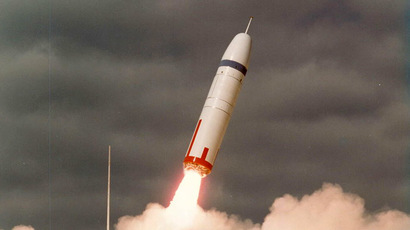Second US guided-missile destroyer arrives in Europe

The USS Ross, the second of four US Navy destroyers considered to be the cornerstone of NATO’s European missile defense shield, has arrived at the Spanish naval port of Rota. Russia considers the system to be a direct threat to its security.
The USS Ross joins the USS Donald Cook at Rota. The pair will be joined by two more Arleigh Burke-class guided-missile destroyers, all of which are fitted with the Aegis weapon and radar system. The USS Porter and USS Carney will round out the quartet of the anti-missile vessels in the US 6th Fleet at Rota in southern Spain.
“On the global and regional stage, we are allies, and we share a common interest in maintaining a Europe that is safe, secure and prosperous. We work closely together with the NATO Alliance, with other partners across the region, and nation to nation as well,” said Vice Adm. Phil Davidson, commander of the US 6th Fleet, upon the arrival of the USS Ross.
The deployment of the four destroyers as part of the European Phased Adaptive Approach is a centerpiece of the European missile defense shield, which will also include interceptor batteries in Poland and Romania, radar in Turkey, and a command center at Ramstein in Germany, a US Air Force base.
The four destroyers will also take part in other maritime security operations, NATO deployments and training exercises, the US Defense Department has said.
The USS Donald Cook arrived at Rota in February, marking a major milestone for the missile defense project.
“For the first time, a ship of the United States Navy equipped with the Aegis ballistic missile-defense system is permanently based in Europe,” said NATO Secretary General Anders Fogh Rasmussen at the time. “The arrival of the USS Donald Cook marks a step forward for NATO, for European security, and for transatlantic cooperation.”
The US military claims its interest in the Mediterranean has increased in recent years because of conflicts and instability across the Middle East and North Africa.
“Permanently forward deploying four ships in Rota will enable us to be in the right place, not just at the right time, but all the time,” US Navy Secretary Ray Mabus said in a Defense Department statement in January.
According to a NATO official statement, the system is designed to “protect all NATO European populations and territory.” Its advocates say it is necessary to protect Europe from the threat of Iranian missiles, as well as other so-called rogue states, such as North Korea.
Amid the escalation of the political crisis in Ukraine, NATO has been maintaining warships in the Black Sea region around the clock, with the USS Donald Cook taking its turn in the caravan of NATO ships conducting surveillance on Russian infrastructure.
Russia is considering the system to be a major threat to its own security and has threatened to increase its own arsenals and missile shield piercing capabilities in response. Thus far, all negotiations on joint participation in the defense system’s development have failed, while NATO has refused to provide any assurances that it won’t be used against Russia.
Meanwhile, a Los Angeles Times investigation revealed Sunday that a crucial defense system on the US west coast, designed to offer "an initial set of missile defense capabilities," according to then-President George W. Bush in 2002, has failed half of its staged tests conducted by the US Missile Defense Agency.
The $40 billion Ground-based Midcourse Defense system has actually performed worse in carefully-scripted tests – which require the system to intercept a mock enemy warhead – since such drills started in 1999, the LA Times reported.
"The system is not reliable," said a retired military official who served in the Obama and Bush administrations. "We took a system that was still in development – it was a prototype – and it was declared to be 'operational' for political reasons.”














